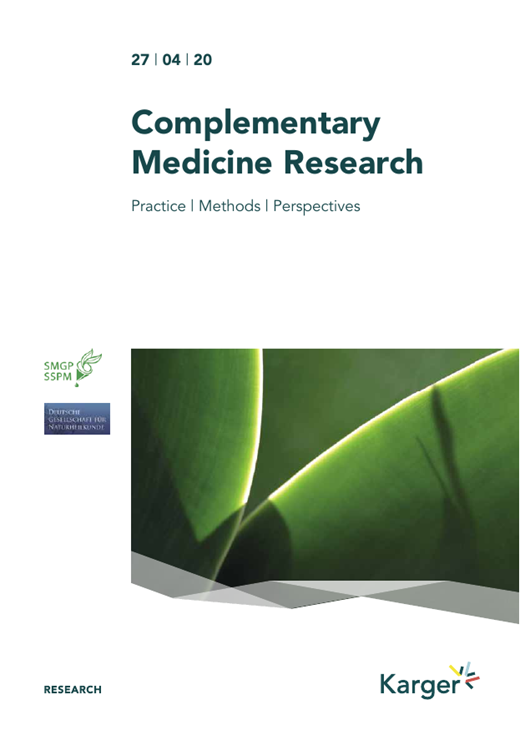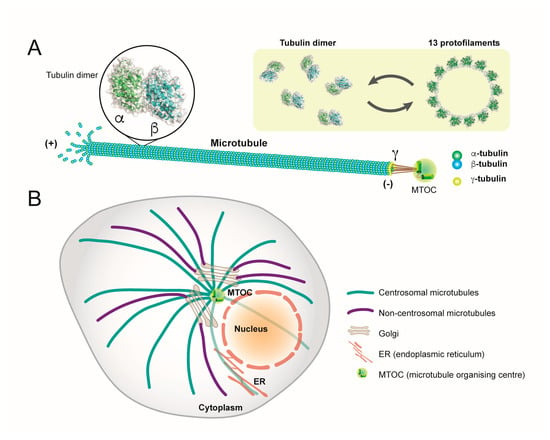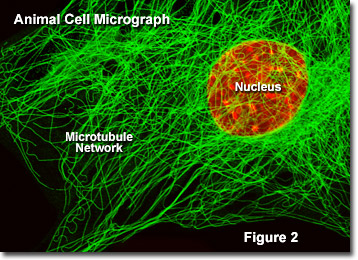So this is generally fantastic news for anyone that dry fasts. Whether it's for healing, longevity, or even weight loss, this mechanism is one of the reasons why you feel 10 years younger after a successful extended dry fast. Or many shorter ones. But why is this so damn important when it comes to healing severe illnesses?! Well, a lot of these dastardly autoimmune illnesses impair our autophagic processes. No one can tell you the details, because it has a plethora of possible mechanisms like mitochondrial dysfunction, NAD+ generating and recycling pathways, macroautophagy disruption of the ULK1 System, and so much more...
Let's dive into how dry fasting can help reboot damaged autophagic pathways, and heal our cells better and faster than any other type of fasting. For this we'll need to understand microtubules, and how they affect cellular health and autophagy. We're going to talk about the paper called Hypertonic stress promotes autophagy and microtubule-dependent autophagosomal clusters. So let's quickly describe what microtubules are. But before we get to microtubules let's quickly address the elephant in the room. Is hypertonic and hypovolemic stress safe while dry fasting?
I'm going to use hypertonic stress here to represent dry fasting, even though technically it's hypovolemic stress, which with enough time turns into hypertonic stress. It's pretty safe to say that the deeper you go into a dry fast the more pronounced the hypertonic stress. This is one of the reasons you want to reach the acidotic crisis to get deeper healing.
Hypertonic. A hypertonic solution has a higher solute concentration compared to the intracellular solute concentration.
Hypovolemia. Hypovolemia is a condition that occurs when your body loses fluid, like blood or water.
Is hypertonic and hypovolemic stress safe while dry fasting?
According to a research paper that tracked participants' health through a 5-day dry fast, the answer is yes.
Please remember that these participants were not new to dry fasting, so they have practiced it in the past. This means that building up gradually to a longer fast should always be seen as a prerequisite.
Here's a summary of the participants' health:

Yet, the participants in the aforementioned study demonstrated normal blood pressure, heart rate, and hemoglobin oxygen saturation, safe values in serum creatinine, urea, K+, Na+, and glucose, a moderate increase in serum osmolality and a substantial increase in glomerular filtration rate. These observations show the effective compensation of all 3 risks and indicate subtle background mechanisms, orchestrating the responses of all involved systems and organs. The objective of the current study was to explore the mechanisms underlying the hypovolemia and hypertonicity compensation, whereas the investigation of the mechanisms underlying the hypoglycemia compensation may be the object of a future study.
Ok now back to microtubules.
What are microtubules in the concept of cell health and autophagy?
Microtubules are like the highways inside cells, essential for keeping the cell in good shape and making sure everything inside the cell gets where it needs to go. These tiny tubules are made from proteins and can quickly build up or break down, allowing them to change as needed for different tasks. They're super important for cell health because they help move organelles and proteins around, make sure cells divide correctly to create new cells and keep the cell's shape and organization. Imagine trying to get around a city or town without roads; that's what a cell without microtubules would face, leading to chaos and problems in how the cell works.
:max_bytes(150000):strip_icc()/GettyImages-680801891-59ac9272054ad900103196a5.jpg)
When it comes to autophagy, which is the cell's way of cleaning up and recycling its own parts, microtubules play a key role here too. They help carry the waste containers, called autophagosomes, to the cell's recycling centers, the lysosomes, where the waste can be broken down and reused. Notice the title of the study "Hypertonic stress promotes autophagy and microtubule-dependent autophagosomal clusters". This process is crucial for getting rid of damaged parts and keeping the cell healthy, especially when it's under stress because the more efficient your autophagy, the healthier the cell under all conditions.

Microtubules also help in organizing the cell's interior, much like organizing a cleanup crew in a city to ensure all waste is efficiently collected and processed. This is important so that the autophagy process runs smoothly, and metabolic pathways run smoothly as well. The beauty here is that once the cell is restructured correctly, we can expect better long-term results even once the hypertonic stress is stopped. Think of it this way. You became extremely sick, which resulted in months or years of cellular deterioration. Restructuring microtubules is the first step to rebuilding the skeleton foundation of your cellular health.
"Hypertonic stress promotes autophagy" Study
Ok. This study (here) looks at how cells cope with changes in their environment that affect the balance of water and salt, a state known as "osmotic homeostasis" or "osmotic balance". When you think of osmosis you imagine things going in and out through a cellular membrane. Does anyone still remember the movie, Osmosis Jones? Dry fasting conditions revolve exactly around this concept. When cells are exposed to a higher-salt environment (hypertonic stress because of lower water levels aka hypovolemia), it can cause damage to their proteins. The study examines two specific things: autophagy, the recycling process where cells "clean up" damaged parts, and the arrangement of microtubules, a component of the cell's skeleton.

The study explored how cells from the kidney react when they're put under a lot of salt stress compared to when they're starving for nutrients. They found that when cells face this salt stress, they shrink but then quickly try to get back to their normal size. This shows that the cell aggressively looks for osmolytes (check out the dry fasting club osmolyte protocol). They also noticed that both salt stress and not having enough nutrients lead to more breakdown of old proteins in the cells.
Having enough circulating osmolytes is critical for a dry fast. I believe depleting them and not properly repleting them is what causes a lot of dry fasting exhaustion people face after multiple extended fasts too closely together. Of course, nutrient deprivation is just as important, but don't sleep on osmolytes.
The study used the more intense kidney cells
We have to be aware that kidney cells are some of the most hypertonic-resistant cells in the body so it may be a bit biased. They actively go through high-salt and low-salt environments. We know that the kidneys are where a lot of the regulation happens, mainly via urine (duh). This is also where pH regulation occurs via sodium bicarbonate absorption or excretion. This is also why I don't think you should take baking soda after a dry fast too quickly unless you run into severe kidney pain and acidosis. I talk about this in a few articles, but the most recent one is Why I don't fully agree with the Pheonix Protocol by August Dunning here.
LC3-II Expression
Let's look at this LC3-II expression chart to really understand what was observed. Please remember what LC3-II stands for. It is a protein that is one of the best markers we currently have for observing autophagy levels. When we have higher levels of LC3-II it means more autophagy is happening, since it's a key component of creating autophagosomes which are the main driver of macroautophagy. I go into a deeper dive and better explanation of it here in The Science behind how a 1-day Dry Fast is equivalent to a 3-day Water Fast in Raw Autophagic Power.

So for this study, the chart above shows us LC3-II expression comparing 3 states.
- One is starvation/nutrient deprivation - So something similar to water fasting.
- The second one is hypertonic stress - So high sodium concentration similar to dehydration stress.
- Note that the body drops electrolytes the deeper you go into a fast. As glycogen levels fall and no more carbs are circulating, the body drops water and with it, electrolytes. That's why you get such a big drop in weight early on. Our body activates Aldosterone and ADH, which hold onto water and sodium aggressively. This is why we can continue going without any supplementation. This is also why we eventually get to a hypertonic stress state since the sodium levels start increasing while the water levels drop.
- The third one was a combination of nutrient deprivation and high sodium levels.
- This one is the closest representation of an extended dry fast.
You can see that by pairing both nutrient deprivation (starvation) and higher sodium levels (hypertonic stress) you get more autophagy expression, however, there seems to be a maximum limit of autophagy at a given time. You can see the upper threshold is somewhere just below 3 on the scale. What the researchers found was that when you pair nutrient deprivation with hypertonicity, you don't get THAT much more autophagy, meaning that there is some limiting factor to both of them. It is very interesting to see that the high NaCl cells exhibited a faster onset of autophagy showcasing that dehydration stress does indeed give us faster autophagy results. In this case, we can see that at 60 minutes the sodium group had almost 50% more autophagy occurring. Remember, these are kidney cells, so not the most accurate representation but we can still use them as a sort of reference.
Interesting point for mixing water and dry
Because of the autophagy threshold, we can see why many Russian dry fasting clinics used a strategy to dry fast for 3 days until the acidotic crisis and then switch to water fasting. This may be a safer route that gives many of the same autophagic benefits - unless we believe that there are more hidden autophagic actions happening that have not yet had a biomarker discovered (very possible). The reason you'd want to do extended dry fasting for longer would be to trigger stronger hypertonic stress and specifically the microtubule restructuring.
Microtubule reorganization and autophagy
By looking at the cells under a microscope, the researchers noticed more of these autophagy markers in specific spots within the cells, especially near the center, when they were under salt stress. This is the explanation for the microtubule reorganization. The cell skeleton gets reorganized under this dehydration stress and becomes more efficient in autophagy. (faster nutrient and lysosome highways) The researchers found that similar restructuring was occurring in immune cells as well suggesting that salt stress seems to be a common reaction among most of our body's cells.


Together, these data indicate that hypertonic stress induces the reorganization of Microtubule (MT) networks. This is expressed by strong MT reorganization at centrosomes and an accompanying accumulation of pericentrosomal autolysosomes. The main link? Microtubule depolymerization immediately following the hypertonic challenge probably contributes to LC3-II production, and thereby autophagy induction.
What does this mean? In real-time, our cells are restructuring their skeletons into a more efficient version that focuses all its strength on healing and maintaining the cell's nucleus, specifically. Proteins may be misfolding, and the cell knows it needs to be ready to take apart anything funky ASAP. Imagine an all-hands-on-deck type of situation. This creates the most efficient highways in the cell and starts calling in the troops (lysosomes) in high amounts. Anything that is off - Gets the recycling treatment ;) Whereas earlier in your illness your body's pathways may have been lazy, sloppy, and degraded. This is a wake-up call that your body and cells need to get back on track. This is the reboot sick and old cells need and get with properly done dry fasting.
When it comes to diseases that destroy our metabolic pathways and cause incurable diseases. It's not a farfetched idea to consider cellular damage in the calculation. With this information, it seems that hypertonic stress is more than just extra autophagy. It literally rebuilds the cellular skeleton, similar to rejuvenating the cell. Imagine giving your cells an anti-aging pill. Everything works better, including autophagy. These changes help cluster special structures called autolysosomes near the cell's center, which is a part of the autophagy process. This clustering and effective autophagy depend on the proper arrangement of these microtubules and are also influenced by other molecular mechanisms. Remember, autolysosomes are already fused autophagosomes and lysosomes, so a very advanced step in the autophagic process. Hypertonicity is the speed hack for autophagy.

Another amazing discovery in this study was that autophagic flux - The autophagic power was not additive when adding autophagy activators like rapamycin. This means that hypertonic stress shares similarities with both nutrient deprivation and rapamycin. Once again showing us there is a sort of limiting factor that they all share. The one clear thing was that hypertonic stress was the fastest activator of autophagy. When lysosomotropic agents (that inhibit autophagic flux) were introduced with hypertonic stress, LC3 levels rose, which means that hypertonic stress is indeed a big initiator of autophagy. Why? Because the lysosomotropic agents like chloroquine normally suppress autophagy by damaging the pH levels in lysosomes. This causes an accumulation of damage that surpasses the threshold and requires the cells to ramp up autophagy even more. This proves that hypertonic states can raise autophagy regardless of nutrient deprivation. No this does not mean you should be taking these agents to hack autophagy, because that is experimental and most likely dangerous.
This is also why the FLCCC is not the best place to get information about fasting, since they still promote HCQ. It and ivermectin may still have a place in an LC protocol, but I think we have enough evidence and anecdotal proof that dry fasting is 100x more potent and (IMO) safer.
This is interesting because it gives us a bit more insight into strategies for blending dry fasting into water fasting. With something like a 3-day dry fast into a 3-day water fast to blend both safety and autophagic flux into a sort of biohack. We know that Russian doctors have practiced strategies like a 3-day dry fast to get to the acidotic crisis about 60% quicker, and then transitioning to a water fast which continues the autophagic flux, but lessens the burden of hypertonic stress.
The study suggests that both autophagy and the reorganization of microtubules are crucial ways that cells protect themselves when exposed to high-salt conditions. With improved microtubules following a dry fast, we can expect the body to have improved autophagy pathways. So the benefits seem to continue afterward too. It seems like a good long-term solution to cell health.
Beneficial Autophagy Side-effects
The best part of it all is that with this super boost to autophagy, we get beneficial side effects. Yes, the cells are trying to survive the hypertonic (dehydration/salt) stress. Yes, a lot of it is being used to save the protein damage. But with this massive upswing in autophagy, we are getting the side-effects of extra autophagy clearing away other damaged components in the cell. This can be aggregates, pathogens (like viruses and bacteria), faulty mitochondria, and more.

Autophagy without the need for Starvation?
Traditionally, autophagy, especially its upregulation, was associated with nutrient deprivation (fasting). However, findings now show that hypertonic stress (cellular stress caused by high salt concentrations) can also significantly increase autophagic activity. This is a pivotal shift in understanding, as it reveals that cells can initiate a heightened state of cleanup and recycling without the need to deprive them of nutrients. Selective autophagy under hypertonic stress targets specific damaged proteins and organelles for degradation, indicating that the cell has mechanisms to identify and eliminate what is harmful or unnecessary even under conditions not related to fasting.
This shows that we don't have to starve ourselves as much and why a 36-hour dry fast is stronger than a 3-day water fast. It's much easier time-wise to do a 36-hour fast instead. If you read my article about 1 day dry fast compared to 3 day water fast you'll notice that the research paper also showed autophagic flux increasing the same amount after 3 days of only eating food and not drinking any water. This idea doesn't include going even deeper for true hypertonic conditions.
If you truly believe in the power of fasting you can now arm yourself with the knowledge that you can indeed condense fasting into shorter windows by doing something like dry fasting. There are other benefits that we didn't talk about like not having to worry about electrolytes on a dry fast, to having excess energy due to higher ketosis and fat burn. You just need to be aware that with great power comes great responsibility. You wouldn't run a marathon in the Gobi desert without adequate preparation, so don't dry fast without learning about it first.
What does this mean for healing and hypertonic conditions?
We are able to start seeing the connection between dehydration and the deep healing that many people look for. These microtubule and autophagasomal clusters come into play when there is a hypertonic environment. This means you really need to get into dehydration. You might think that a few days of dry fasting will get you there because you start to get really thirsty and hungry. The answer is that you need to at least get to the stage where your mouth starts to get very dry. A good indicator that you are reaching the milestone where the deep healing and restructuring is happening is when that dry mouth occurs. Early in this stage, you may fluctuate between normal and dry mouth, depending on how much you're moving or resting. It also depends on how much you have your mouth open, or specifically, how much you are talking. Talking for one hour can lead to a loss of up to 2 ounces (approximately 60 milliliters) of water from the body through evaporation and breath.
Embrace the dehydration, but if you still plan on continuing much longer with the dry fast, then use strategies that I have mentioned in previous articles like mouth taping. It's very easy to leave your mouth open when you sleep or while you're in the zone working. Remember, you don't want to sit in water the deeper you get into the fast because of aquaporin level changes and the ability of your body to absorb water. (Read more in my aquaporin article). Good luck on your healing journey!





